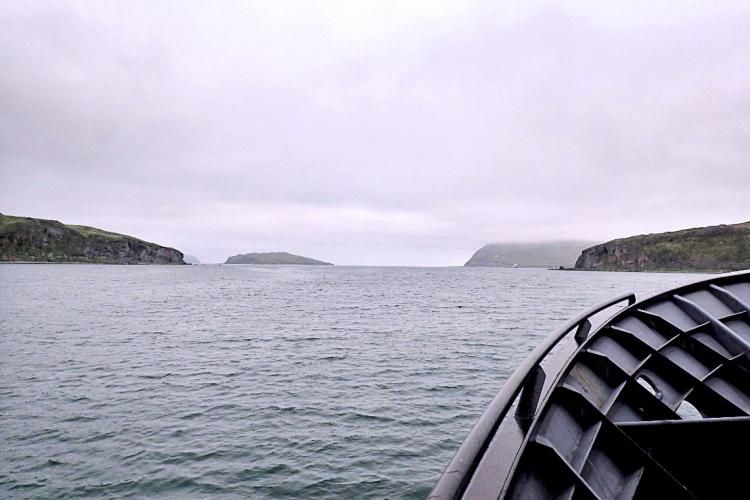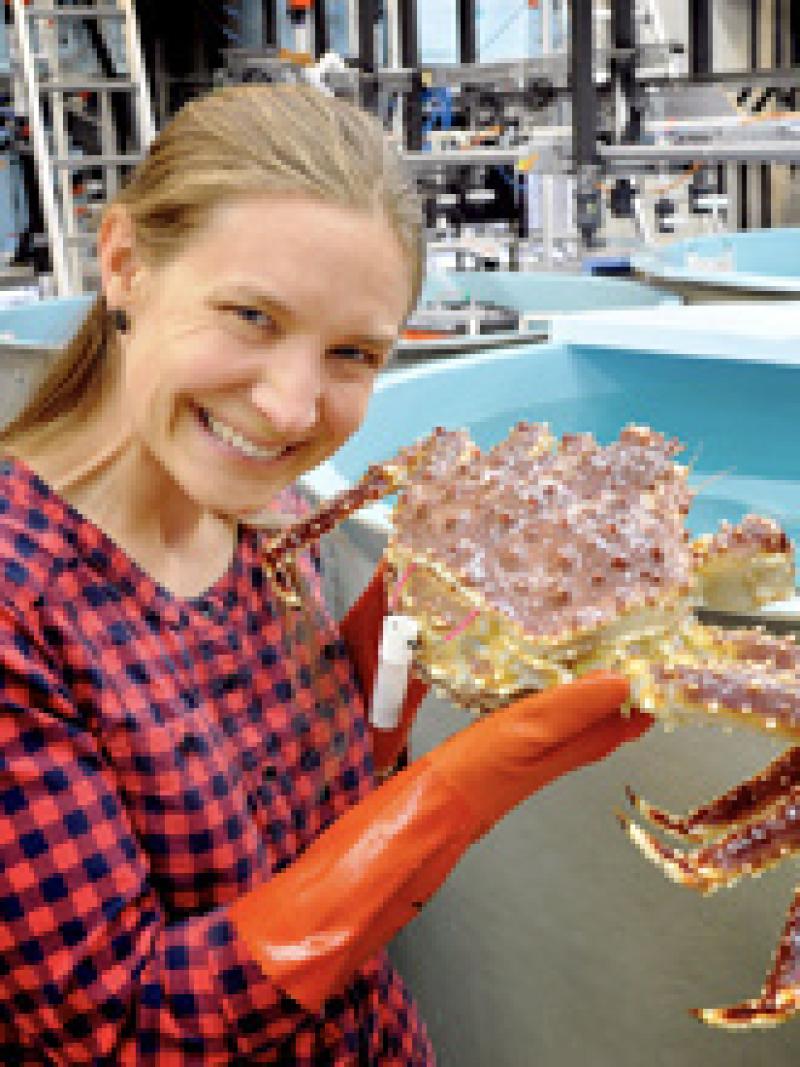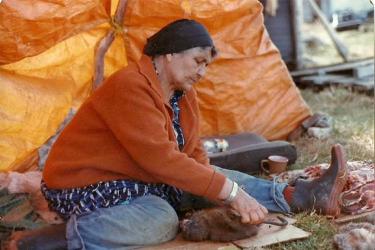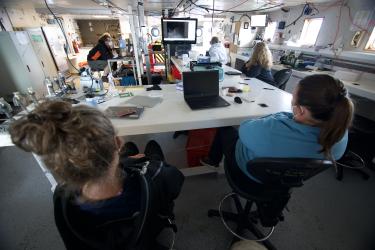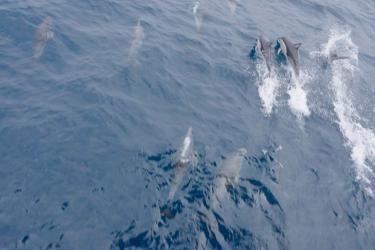
A crab pot being loaded onto our research boat.
When we prepare to go to sea we need lots and lots of lists, that get checked once, twice, and many more times. When you are in the middle of the ocean, you can’t exactly run back to the store— and no, there isn’t an Amazon boat to bring it to you! The big things are easy to remember, but it’s often trivial things like pencils or zip ties that get forgotten. You don’t want to be at sea for three weeks with only one pencil and lots of data to record! After many last-minute trips to the store, we left Dutch Harbor a few days ago, and so far so good, we don’t seem to be missing anything!

We’ve started with the trawl survey, where we’ve measured many Tanner crabs of all different sizes. There are so many fascinating creatures that live on the seafloor. I feel so lucky to see them all – beautiful sea stars of all shapes and colors, tons of hermit crabs carrying around their houses, flatfishes with bright scales - the list goes on and on. We’ll start setting the crab pots in a few days. NOAA Fisheries scientists are also conducting the annual survey of crab and groundfish in the southeastern Bering Sea. They are letting us know where they find mature male king crab in Bristol Bay. We'll use this information to set crab pots in those spots.

